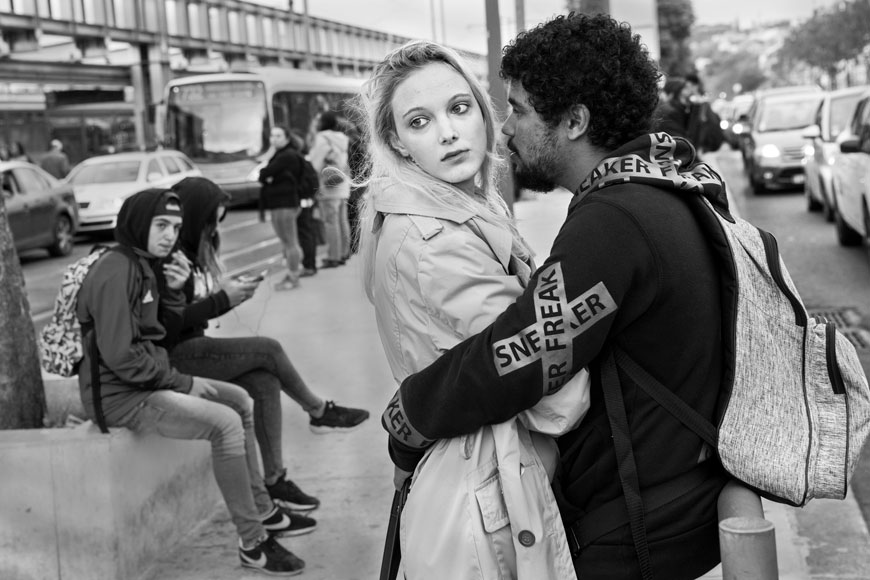Street Photographers for Beginners
Street Photographers for Beginners
Blog Article
All About Street Photographers
Table of ContentsThe 5-Second Trick For Street PhotographersMore About Street Photographers3 Easy Facts About Street Photographers Described7 Easy Facts About Street Photographers DescribedThe smart Trick of Street Photographers That Nobody is Discussing
Street photographers do not always have a social objective in mind, however they choose to separate and catch moments which may otherwise go undetected.He was influenced by several of those that affected the road professional photographers of the 1950s and '60s, he was not mainly interested in catching the spirit of the road. The impulse to aesthetically record people in public started with 19th-century painters such as Edgar Degas, douard Manet, and Henri de Toulouse-Lautrec, who functioned side by side with digital photographers attempting to capture the significance of city life.
In contrast to Atget, professional photographer Charles Marville was worked with by the city of Paris to produce an encyclopaedic document of Haussmann's metropolitan preparation task as it unfolded, hence old and new Paris. While the professional photographers' topic was essentially the very same, the outcomes were noticeably different, demonstrating the impact of the photographer's intent on the personality of the photos he created.
The Best Guide To Street Photographers
Given the great quality of his photographs and the breadth of product, architects and artists commonly got Atget's prints to utilize as referral for their own job, though commercial interests were rarely his main motivation. Instead, he was driven to picture every last remnant of the Paris he liked. The mingled passion and seriousness of his objective sparkle through, resulting in photos that tell his own experience of the city, qualities that anticipated street photography of the 20th century.

Unlike his peers, Brassa used a larger-format Voigtlnder cam with a longer exposure time, compeling him to be more computed and thoughtful in his method than he might have been if utilizing a Leica. (It is thought that he might not have been able to manage a Leica during that time, however he did, however, utilize one in the late 1950s to take colour pictures.) Brassa's photos of the Paris underworld illuminated by fabricated light were a discovery, and the compilation of the series that he published, (1933 ), was a major success.

The 25-Second Trick For Street Photographers
It is since of this fundamental understanding of the art of picture taking that he is commonly credited with rediscovering the tool all over again approximately a century given that its invention. He took photographs for even more than a half century and affected generations of professional photographers to trust their eye and instinct in the minute.
These are the concerns I will try to respond to: And then I'll leave you with my own interpretation of street photography. Yes, we do. Allow's start with specifying what a meaning is: According to it is: "The act of defining, or of making something precise, distinctive, or clear".
No, definitely not. The term is both restricting and misleading. Appears like a street digital photography need to be pictures of a roads best?! And all street professional photographers, besides a tiny number of outright newbies, will completely value that a road is not the essential element to street photography, and really if it's a photo of a road with perhaps a few monotonous individuals doing nothing of passion, that's not street digital photography that's a photo of a street.
Some Known Details About Street Photographers
He makes a valid check this site out factor do not you think? However, while I agree with him I'm unsure "candid public photography" will certainly catch on (although I do type of like the term "candid digital photography") because "street digital photography" has actually been around for a very long time, with numerous masters' names connected to it, so I think the term is right here to stay.
Inside?! I hear you shout as you drink your clenched fist to the sky. Why not? You can contend the coastline, at an event, in an alley, in a park, in a piazza, in a coffee shop, at a museum or art gallery, in a metro terminal, at an occasion, on a bridge, under a bridge ...
Yes, I'm afraid we have no option! Without rules we can not have an interpretation, and without a meaning we do not have published here a genre, and without a style we do not have anything to specify what we do, and so we are stuck in a "policies definition genre" loophole! And no-one wants to obtain embeded a loop. - Street Photographers

Report this page